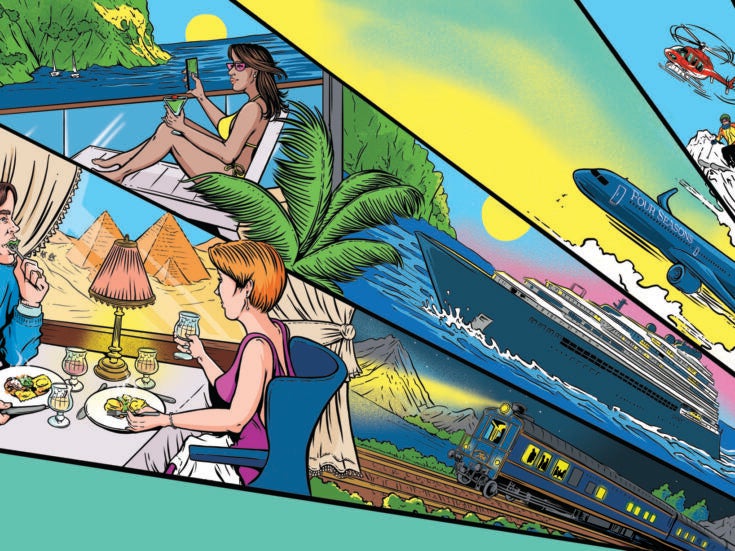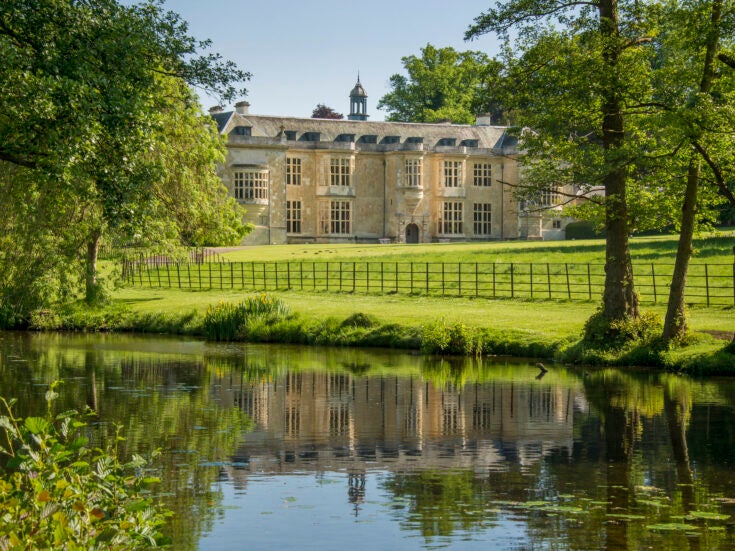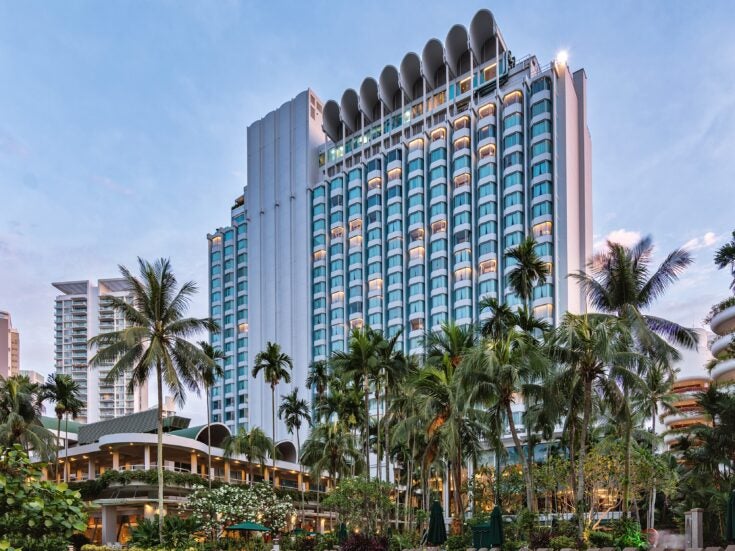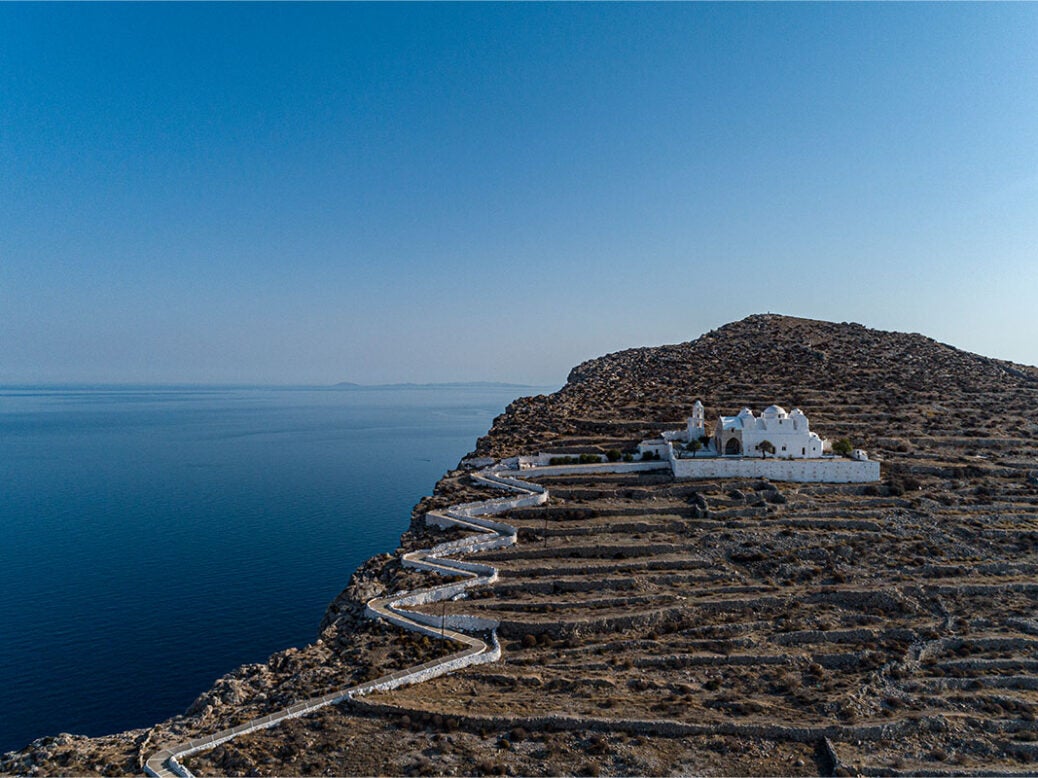
In 1964, four young British women tottered off a boat on to the rugged, rocky shores of Folegandros, unwittingly introducing the small Grecian island to the miniskirt, and its first taste of modern tourism. So goes the story told by our tour guide, Poly, a retired postal worker who is old enough to remember the excitement of these early visitors, and the arrival of the island’s first car (her mother’s) in 1984.
[See also: Set-jetting: HNW seek out holiday destinations seen on screen]
Sixty years on from those first Brits, Folegandros remains largely under the radar, despite being only three and a half hours by sea from Athens or 50 minutes from Santorini (or 10 minutes by helicopter). The island is home to 300–400 residents for most of the year, with the total rising to around 700 in summer, including two police officers and a single doctor. The locals share the land with a smattering of donkeys and small herds of grazing goats. There is no hospital, just one central road and two primary schools. There are also 65 churches, painted, like the buildings, in traditional white.
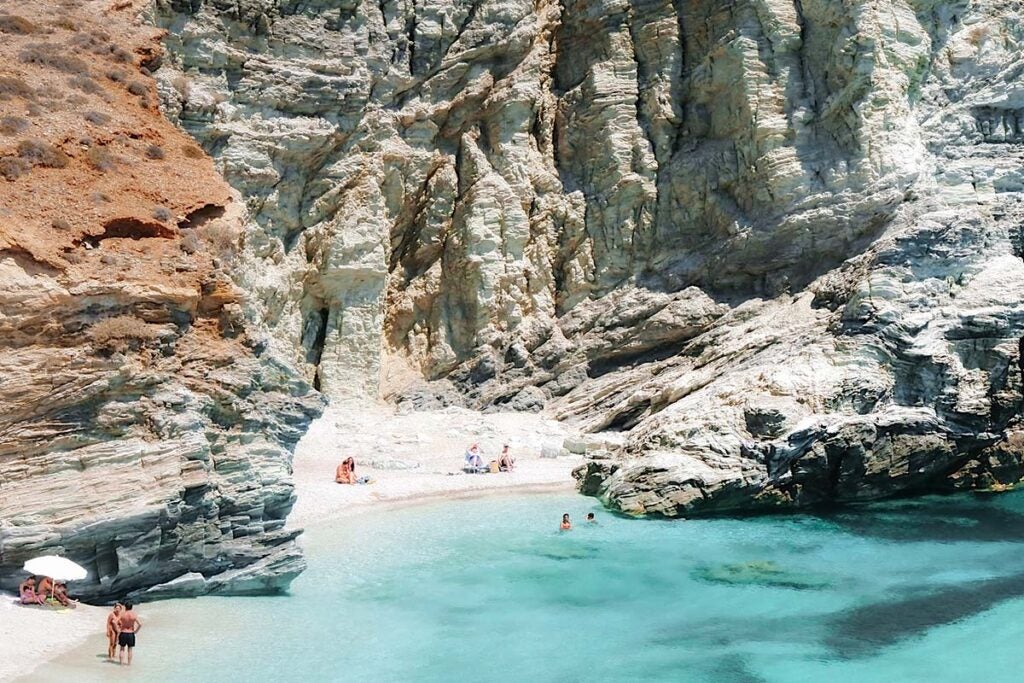
The largest of three main settlements is Chora (pronounced ‘Hora’), from where we embark on a short, touristic pilgrimage to the Church of Panagia, the most recognisable landmark of Folegandros, which sits 300 feet above sea level and offers views over the village, across the arid, rough landscape criss-crossed with stony walls, and out to the expanse of sea and sky beyond.
[See also: Best travel and holiday advisers 2024]
At the historic heart is the castle, which was built in the early 13th century at the start of 300 years of Venetian rule (the island was later taken by the Ottoman Turks). Once a fortress to guard against pirates and other invaders, today the postcard-perfect paved streets of this medieval relic are flanked by terraced houses with bougainvillea bushes and doors painted in cheerful shades of mint, azure and sea green.
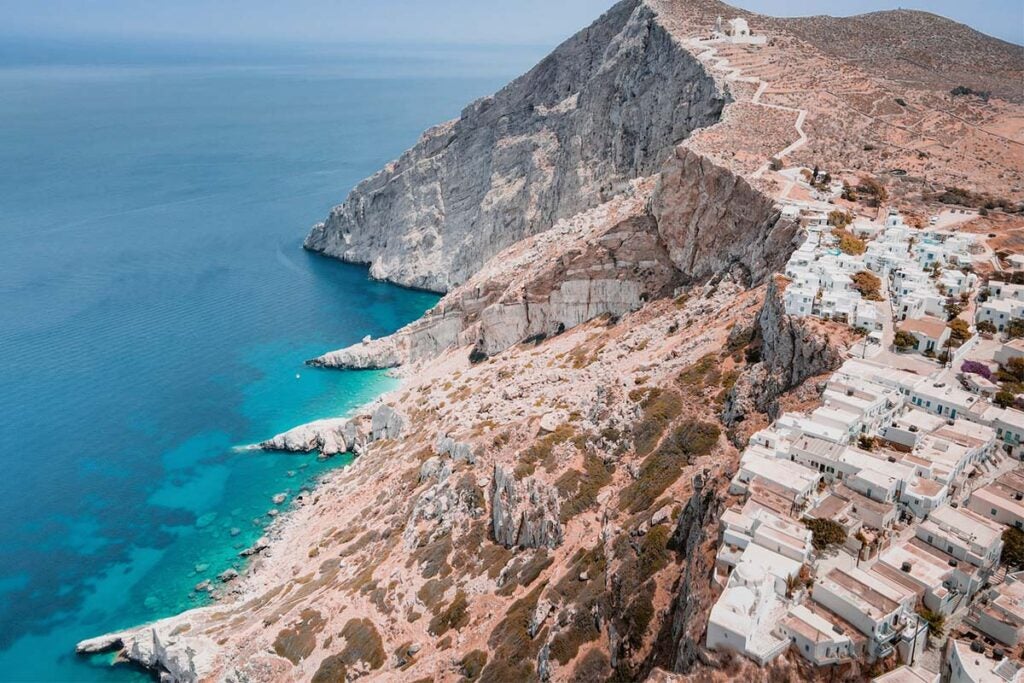
There is a merciful absence of phone-wielding influencers as we stroll past independent boutiques and shaded squares, where the scent of jasmine hangs heavily in the air and tourists and laid-back locals order plates of matsata, the island’s famous pasta.
The trailblazing tourists of the Sixties were given room and board by wealthy residents. Today, there are Airbnbs and independent hotels offering a total of 1,500 rooms, according to one estimation. In contrast, Santorini has an estimated 70,000.
Five-star ‘raw luxury’
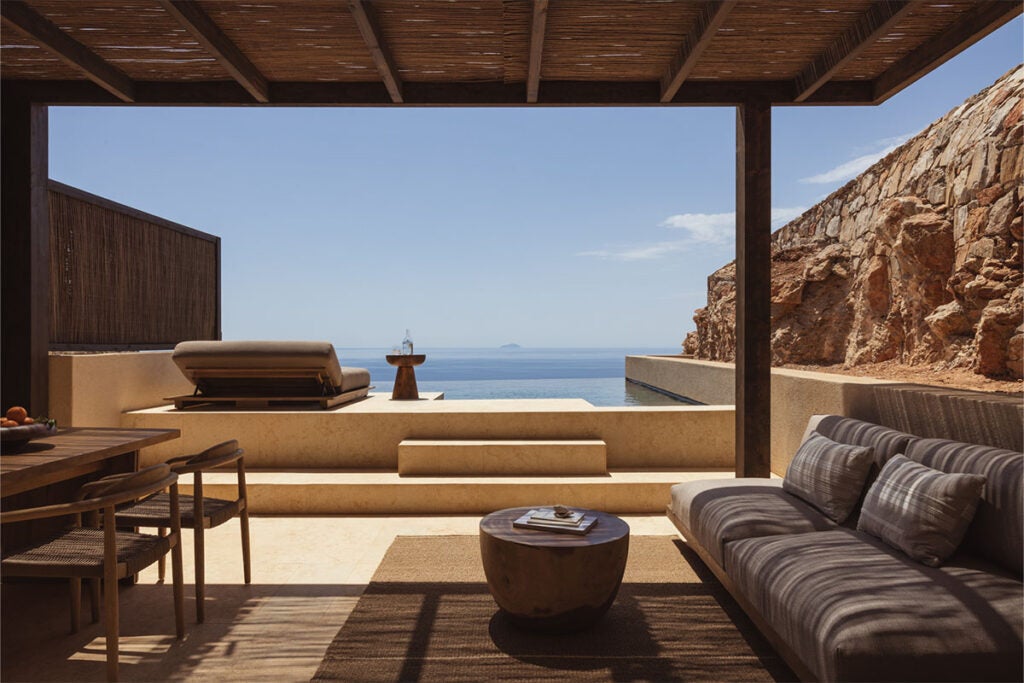
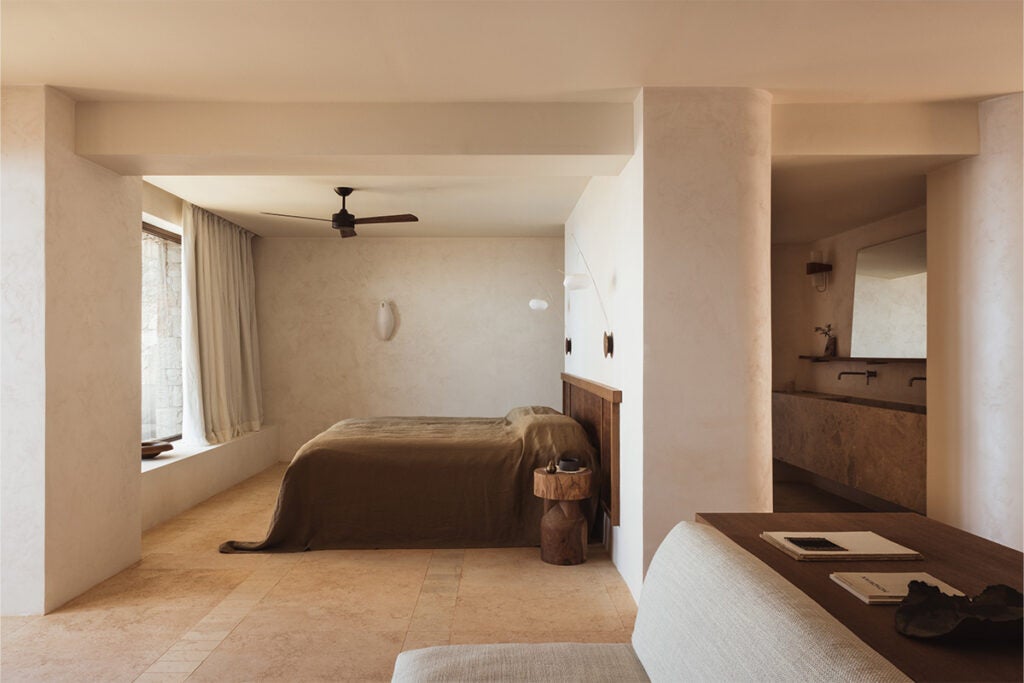
The latest arrival on Folegandros is the island’s first luxury boutique resort, Gundari. Set on 80 acres on the southern cliffs, the property offers 27 suites and villas with private infinity pools that seem to melt into the Aegean Sea.
‘When I first saw the site, I saw somewhere secluded, pristine, untouched, on an island that was also secluded,’ explains gregarious Australian first-time hotelier Ricardo Larriera on a tour of the site just days after its opening. He wants to offer ‘raw luxury’ to travellers in search of experiences off the beaten path.
[See also: Best luxury travel companies 2024]
‘Tourists who go to Santorini or Mykonos typically include another two islands in their trip, so it was an opportunity to put Folegandros on the map for luxury island-hoppers,’ he explains of the decision to build there after being introduced to it by a friend with family ties to Folegandros. ‘It has always been an island that attracted a sophisticated set of travellers, so it was a place that was already a natural fit for this sort of concept.’
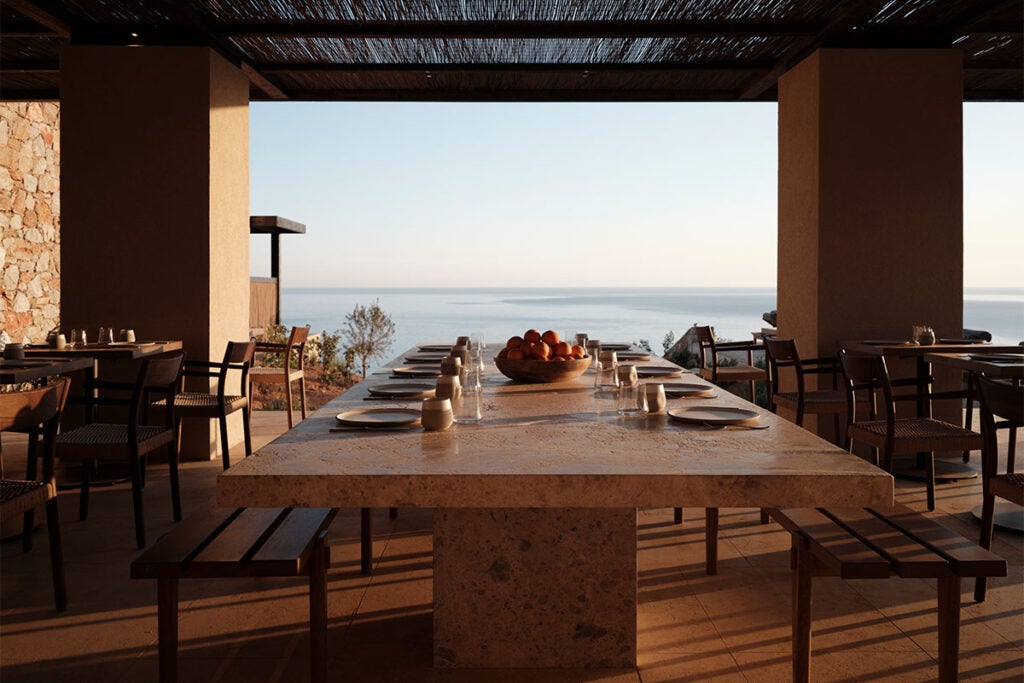
Greek architecture firm Block722 oversaw both construction and design, creating a collection of single-storey blocks from stone excavated from the site. Marble, wood and stone flow from the spacious suites, tastefully decorated in earth tones, into communal areas such as the pool, spa and restaurant-bar, which serves refined Greek dishes devised by influential Michelin-starred chef Lefteris Lazarou. Sustainability is at the forefront: there is solar power, carbon emission monitoring and a partnership with a nature conservation consultant to protect the endangered Eleonora’s falcon and Bonelli’s eagle, which nest in the area.
[See also: Dorchester Collection’s first Middle East hotel is ready for business]
‘Soul’ and ‘concept’ are important to Larriera, whose background is in advertising and marketing. ‘This isn’t a destination resort, it’s a destination concept. We’re not encouraging people to sit by their swimming pools and order room service. We are really encouraging people to get out and see the island.’
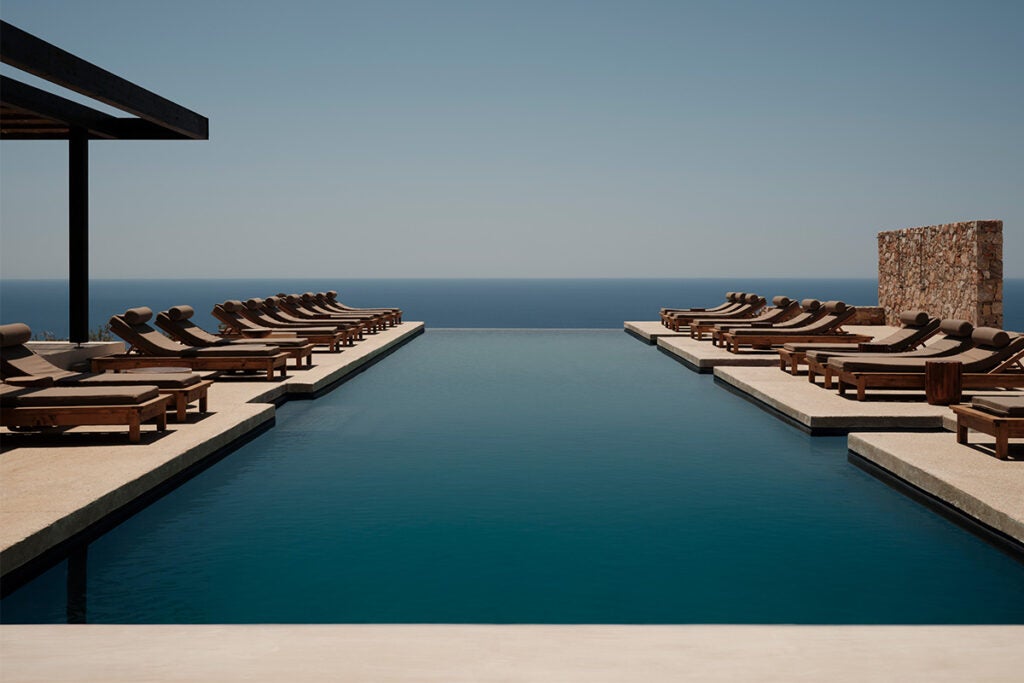
To this end, friendly staff can arrange vineyard experiences and private boat tours, and offer electric bike, all-terrain vehicle and private car rentals for independent exploration. Over morning coffee in the indoor-outdoor restaurant, Larriera stops by guests’ tables to offer personal recommendations on the best restaurants and beaches.
The lack of tourists, even in the island’s relatively popular spots, is striking. There are no plastic chairs outside restaurants, no pay-for sunbeds on the beach, no bars blasting music after-hours. Locals are protective of their status as the ‘undiscovered gem’ of the Cyclades archipelago. Poly says that they ‘fear’ becoming the next Santorini but don’t think it will become a reality. ‘We have no roads,’ she says simply. (The 15-minute drive from the small port of Karavostasis to Gundari is largely off-road terrain.)
[See also: Inside Necker Island: Richard Branson’s private retreat]
Larriera has plans to expand the hotel (a farm-to-table restaurant, wine bar, nature reserve project and second phase of accommodation are already in the works) but is determined not to become a fly-and-flop destination: ‘It’s ridiculous to get people all the way here and then to just get them stuck in the resort because of profitability, when there is so much magic out there on the island. It’s Gundari and Folegandros; there’s not one without the other.’
This feature first appeared in Spear’s Magazine Issue 92. Click here to subscribe


